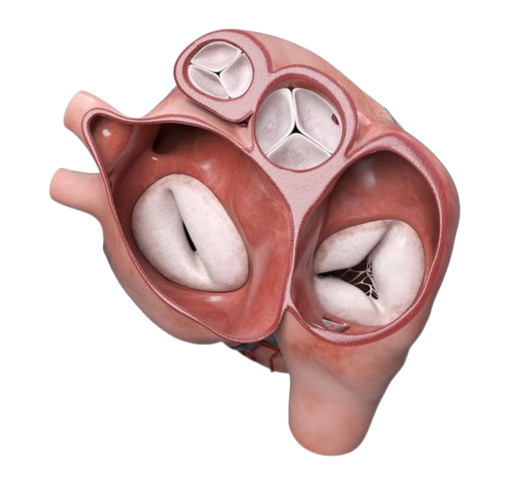Redefining Mechanical Mitral Valve Replacement: Integrating the Mitral Apparatus into Cardiac Physiology.

The mitral valve’s asymmetric architecture is central to generating the left-ventricular vortex that optimizes ejection efficiency and preserves myocardial energetics.
In contrast to conventional circular mechanical valves adapted from aortic geometry, the Mythralica prosthesis replicates the D-shaped, asymmetric architecture of the native mitral annulus. This design reestablishes physiological vortex formation and restores energy-efficient intraventricular flow.
The mitral valve is not merely an atrioventricular conduit; it is a dynamically coupled structure whose asymmetric leaflets and subvalvular apparatus generate a stabilizing intraventricular vortex during diastole. This vortex enhances ejection efficiency, minimizes flow stagnation, and contributes to the heart’s intrinsic self-cleaning mechanism.
Conventional mechanical mitral valves are derivatives of circular aortic designs. This geometric mismatch disrupts physiological flow trajectories, increases shear regions, and predisposes to stasis-related complications.
Mythralica is the first mechanical mitral valve designed specifically for the mitral position. Its asymmetrical leaflets replicate natural flow, aiming to restore physiological vortex dynamics inside the heart.
Asymmetry — Leaflet geometry replicates native mitral anatomy and annular orientation.
Directed Flow – Flow channels engineered to maintain physiological rotational patterns and minimize stagnation zones.
Hemodynamic Efficiency — Support cardiac output at rest and exertion.
Safety — Minimize stasis and turbulence.
“The vortex is not merely flow — it is function. Restoring it is fundamental to a heart that self-cleans, conserves energy, and sustains efficiency.”